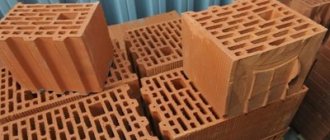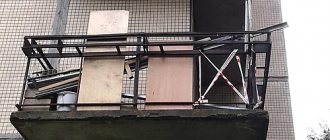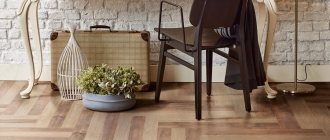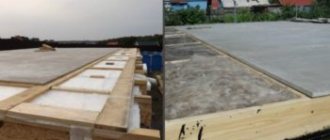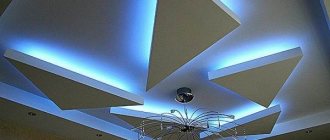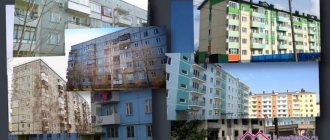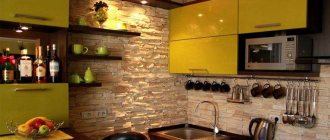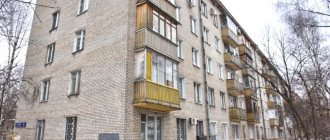Country houses are rarely built from LVL timber. It turns out to be an expensive pleasure. It differs from double timber in increased strength, reliability and more. It retains heat excellently. It is not afraid of severe frosts typical of the harsh Russian winter. Doesn't sit down. Does not deform under the influence of destructive external factors. Meets the current Russian state standard “GOST 33124-2014”. Check out its principles here. Want to know more? Read an honest review about the features, as well as the advantages and disadvantages of the building materials from which Americans built houses and cottages back in the thirties...
What is LVL timber
LVL materials appeared in 1935 in the laboratory of the US Federal Forestry. After 30 years, mass production of beams was launched in America. They are made from thin sheets of wood that are joined by gluing. The raw materials are pine, larch, spruce and other conifers.
One beam can consist of 24 layers. Typically, panels of 9 to 12 balls are used in construction.
Such materials are produced in 2 types. If the layers are in the longitudinal direction of the wood fibers, LVL beams are called structural. They are able to withstand large loads with small cross-sectional dimensions. The construction of a massive foundation is not required. The disadvantage of such timber is that the edges curl when the panel width is large.
In the structure of the second type of LVL timber, every 5th layer is laid across the remaining fibers. This provides strength to the lumber and eliminates twisting. Therefore, it is used to create doors, walls, and wide surfaces. LVL timber with different markings are available on the market.
Russian factories produce goods with the following designation:
- R, S - high-density veneer is placed parallel to the wood fibers;
- X, Q - adjacent sheets are directed perpendicular to the wood fibers;
- I - a mixture of the previous types from veneer of a lower grade;
- T - similar to S, but has fewer layers.
Material marked R is suitable for the construction of load-bearing structures, S - for replacing wooden beams. Beams marked X and I are used to build walls and partitions. Brand Q is intended for the production of roofing panels and ceilings. Lumber with a T mark is used as a joist for flooring.
Strength calculation. Comparison
Let's compare the load-bearing capacities of 3 types of beams: wooden I-beam ICJ (with flanges made of LVL beams), wooden beams, solid LVL beams.
The calculation will be carried out using the 1st and 2nd limit states (for loss of operational properties and for deflections). The calculation based on the 2nd limit state (by deflections) will be important and decisive for us. It is the value of deflection under load under equal loading conditions that will be our comparison criterion.
Conditions for calculation:
- Estimated length (clear distance between adjacent supports) 5.8 m
- Load per m 2 floor 400 kg
- Beam pitch 0.4 m
- Load per m. beams 400kg/m 2 x 0.4= 160 kg
| I-beam ICJ-300L | Dry planed wooden beam 100x240 mm | Solid rectangular LVL timber 69x260 |
| Characteristics: |
Moment of inertia 9,476.5 cm4
Moment of resistance 631.8 cm3
Modulus of elasticity 12,000 MPa
Design resistance 22.0 MPa
| Characteristics: Moment of inertia 11,520.0 cm4 Moment of resistance 960.0 cm3 Modulus of elasticity 9,000 MPa Design resistance 14.0 MPa | Characteristics: Moment of inertia 8,788.0 cm4 Moment of resistance 676.0 cm3 Modulus of elasticity 14,000 MPa Design resistance 26.5 MPa | |
| We carry out calculations based on the first limit state: (where R is the design bending resistance, M is the maximum moment (M = q * L 2 /8; M = 160 * 5.8 2 /8 = 672.8 kNm), W is the moment resistance) | ||
| R=M/W R=672.8 kNm/631.8*10 -6 cm3= 1.06 kNm2 = 10.6 MPa -6 cm3= 0.7 kNm2 = 7 MPa -6 cm3= 0.99 kNm2 = 9.9 MPa We carry out calculations based on the second limit state: | ||
Properties and performance characteristics of laminated timber LVL
The material has high strength, which is 3 times higher than that of conventional lumber. It is achieved by parallel arrangement of fibers. This is the main difference between LVL materials and plywood.
The timber has the following properties:
- Moisture resistance - humidity indicator from 8 to 12%. The timber practically does not absorb moisture. It can be used for cladding the walls of saunas and bathtubs.
- Durability - for the production of veneer, wood is selected immediately after felling. Over time, cracks do not appear on the surface, and the material does not dry out.
- Uniformity - the fibers are evenly distributed over the entire plane, which ensures the same quality of the material. There are no longitudinal or transverse deformations.
- Lightweight - weighs less than solid timber. Does not change weight even when exposed to moisture.
- Bending resistance ranges from 19 to 35 MPa, tensile strength - from 16 to 26 MPa, depending on the direction of the fibers.
- Withstands loads up to 480 kg/m2.
- Fire resistance - the material belongs to class E. Phenol-formaldehyde resin, which is used for gluing layers, does not oxidize and prevents fire. The dense structure does not allow fire and heat to penetrate the inner balls.
LVL timber does not lose its properties at a temperature of 300 degrees for 30-60 minutes. It smolders and gradually fades away.
The material does not deteriorate under the influence of aggressive substances. It is not susceptible to rotting and the influence of bacteria.
Beams made of laminated timber: characteristics
The high strength and durability of the material is ensured by its production technology. Veneer, varying in density, is evenly distributed in LVL timber. This ensures the absence of warping and stability of the beam or slab.
LVL timber can withstand bending loads that exceed the characteristics of solid timber timber. The material also demonstrates better performance in resisting tensile loads.
A special adhesive composition and pre-treatment of the veneer makes the material non-hygroscopic. Operation at high humidity does not lead to changes in the geometry and weight of the LAN timber.
LVL timber is also resistant to chemically aggressive influences.
LVL timber can be bought in Moscow from the manufacturer at affordable prices in the Recons Eco online store.
Dimensions of LVL timber and prices
The maximum width of the beams reaches 1.8 m. At the request of the customer, they can be cut into pieces. The standard length is limited by the size of the press - 18 m. If transport does not allow transporting such boards, they are cut. Thickness ranges from 18 to 102 mm. The price for 1 m3 of material varies from 25,000 to 36,000 rubles. The cost is affected by the type of wood, the number of veneer balls and density.
In Russia there are 2 factories for the production of LVL timber: Talion-Terra in Torzhok () and LVL-Yugra in Nyagan (). Products from Finland from the company Finforest () are considered popular in Russia.
Calculation of LVL timber floors
Hidden drawings and dimensions are available after paying for access.
If you have paid for a subscription, logged in to the site, but see this message, it means your browser is not compatible with the functionality of the calculator. Please use the latest version of Google Chrome to continue using the site.
- Top view of the arrangement of wooden beams on the floor
The calculation is performed for a single-span beam made of LVL timber.
LVL-timber is a new and high-tech composite material made on the basis of ply veneer from coniferous wood. Being completely homogeneous throughout, having the same physical and technical characteristics, LVL beams are considered one of the strongest and most durable, surpassing solid and laminated timber in similar indicators.
Calculate the LVL beam floor using our effective online calculator KALK.PRO and get the optimal values for the section size or pitch between beams. You will also receive the maximum deflection value, separate parameters when calculating strength and deflection, a set of drawings and an adaptive 3D model.
All calculations are carried out taking into account SNiP II-25-80 (SP 64.13330.2011), and the technical characteristics of the material are based on products under the Ultralam™ LVL brand. Detailed instructions for working with the calculator can be read on the page of the section “ Calculation of beams ”.
Production technology
The production of high-quality beams is characterized by high energy costs and complexity. The process requires special equipment, so it will not be possible to make them in artisanal conditions.
The wood is selected immediately after felling. Typically, in the production of LVL timber, the thick root part of the tree is used.
The technological process includes the following stages:
Prepared logs of a certain length are sent to a bark removal machine. As a standard, a layer of 3 mm is removed.- The wood is sent for hydrothermal treatment. It is placed in pools with warm water (50 - 80 degrees) for 24 - 36 hours. Wet material is easier to peel.
- The logs are sawn into individual logs and peeled on a machine to obtain a 3 mm thick veneer.
- The produced sheets are cut into the required sizes, sorted by moisture level and sent for drying. The material must contain no more than 8% moisture.
- Finished veneer is divided by density and quality.
- An adhesive is applied to the surface and one slab of several layers of veneer is formed under a press.
- The resulting LVL bars are cut.
The process is fully automated. Density is determined using ultrasound. Color scanners are used to detect defects. The waste is used to make fuel pellets, and the bark is sent to the plant’s boiler room. At the end of production, the goods are marked and packed in film.
Are you planning to use LVL timber in construction?
Yes
No
Review of prices for products from domestic manufacturers
As was already written above, only two companies produce LVL timber in our country, and it is for this reason, as well as due to the high technology of the process, which requires complex and energy-intensive equipment, that the cost of these products is quite high.
As of the third quarter of 2021, the cost for LVL timber and LVL slab, on average across the country, is 28,000 - 35,000 rubles per 1.0 m3 of product.
The price depends on the quality of the raw materials used (grade, density, etc.), as well as the region where the construction site is located or the trading company involved in the sale of such products.
A variety of standard sizes allows you to choose timber for a specific type of use and location
Why is marriage excluded?
At each stage, the material undergoes quality control. When fed into the peeling machine, the block is scanned by a laser. The information processed on the computer is transmitted to spindle clamps, which place the tree in a position that will ensure the best yield of sheets with minimal rounding. Damage is detected by cameras and scanners at the wood cutting stage, which minimizes product defects. Layers whose humidity exceeds 8% are automatically sent to dry.
Products undergo special tests and receive confirmation of compliance with standards. Therefore, when purchasing in a store, they ask to show certificates for the goods.
Advantages and disadvantages
LVL timber is suitable for construction in any weather because it does not deform under the influence of external factors. The material has the following advantages:
- the level of strength is higher compared to ordinary wood;
- not afraid of aggressive substances and humidity;
- it is not affected by rot, fungus and other bacteria;
- does not ignite in case of fire;
- high heat and sound insulation;
- lightweight and easy to build;
- does not load the foundation;
- wide range of sizes;
- absence of defects and cracks;
- allows you to implement unusual architectural solutions.
Serious disadvantages include airtightness and environmental issues. Despite meeting the standards, substances in the bonding resin may adversely affect the body. The downside is the high cost of the panels compared to other wood materials.
Prices for wooden I-beams
Beam with wooden shelfShelf size, mmLength, mHeight (H), mmOSB thickness, mm Price, rub./linear mBeam CM-14070x45 up to 61409350 rub.Beam CM-24070x45 up to 62409385 RURBeam CM-30070x45 up to 63009400 rubBeam CM-36070x45 up to 63609415 RURBeam CM-40070x45do 64009430 rub.Beam CM-46070x45 up to 64609450 rub. Beam with wooden shelf, length up to 12 metersShelf size, mmLength, mHeight (H), mmOSB thickness, mm Price, rub./linear mBeam CM-140LT72x48 up to 121409485 RURBeam CM-240LT72x48 up to 122409515 RURBeam CM-300LT72x48 up to 123009530 rub.Beam CM-360LT72x48 up to 123609545 rubBeam CM-400LT72x48 up to 124009560 rubBeam CM-460LT72x48 up to 124609575 rub Beam with shelf made of LVL barsShelf size, mmLength, mHeight (H), mmOSB thickness, mm Price, rub./linear mBeam SM-240L64x39do 122409505 RURBeam SM-300L64x39do 123009525 RURBeam SM-360L64x39do 123609535 RURBeam SM-400L64x39do 124009555 rubBeam SM-240L with wide flange 89x39 up to 122409615 RURBeam SM-300L with wide flange 89x39 up to 123009635 RURBeam SM-360L with wide flange 89x39 up to 123609645 RURBeam SM-400L with wide flange 89x39 up to 124009665 RURBeam SM-460L with wide flange 89x39 up to 124609685 RURFree layout and calculation of beams + 7 495 797 05 60
I-beam rafters
I-beam rafters
I-beam floors
I-beam ceiling
I-beams for floors

